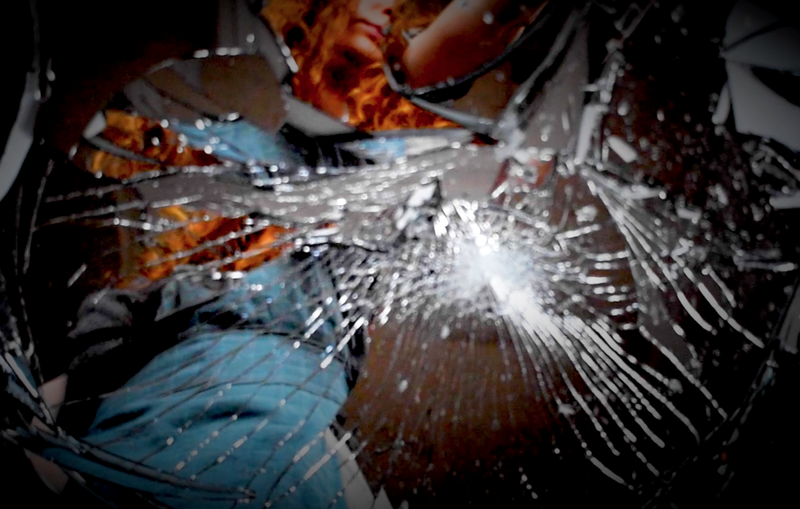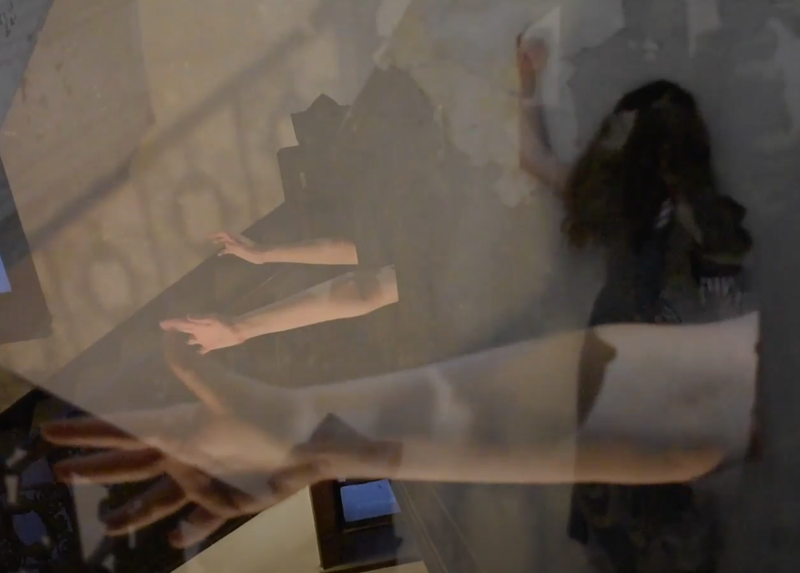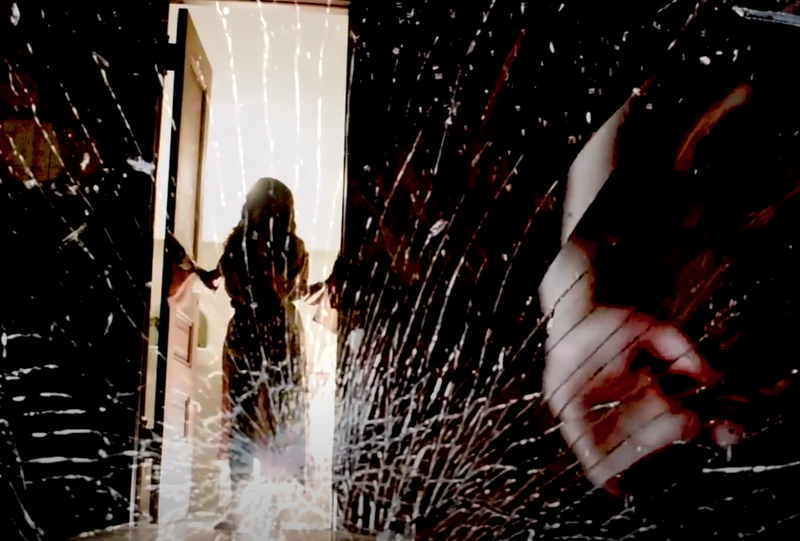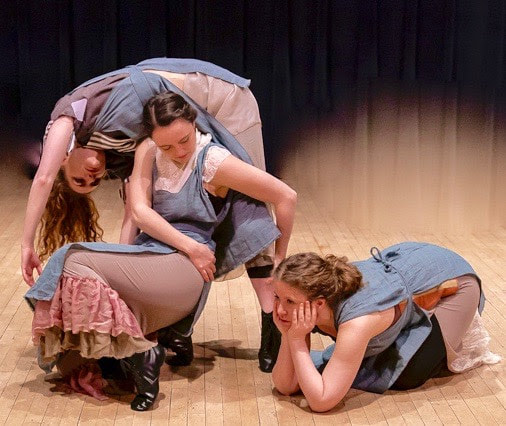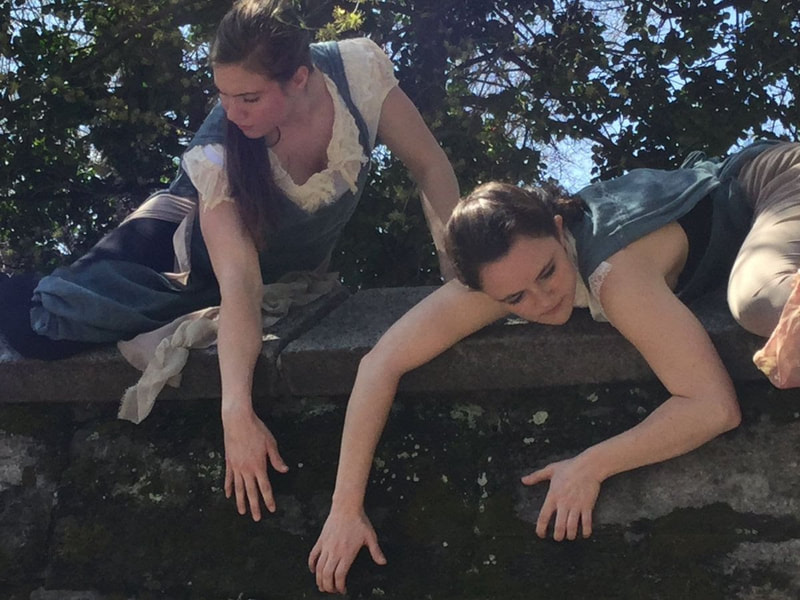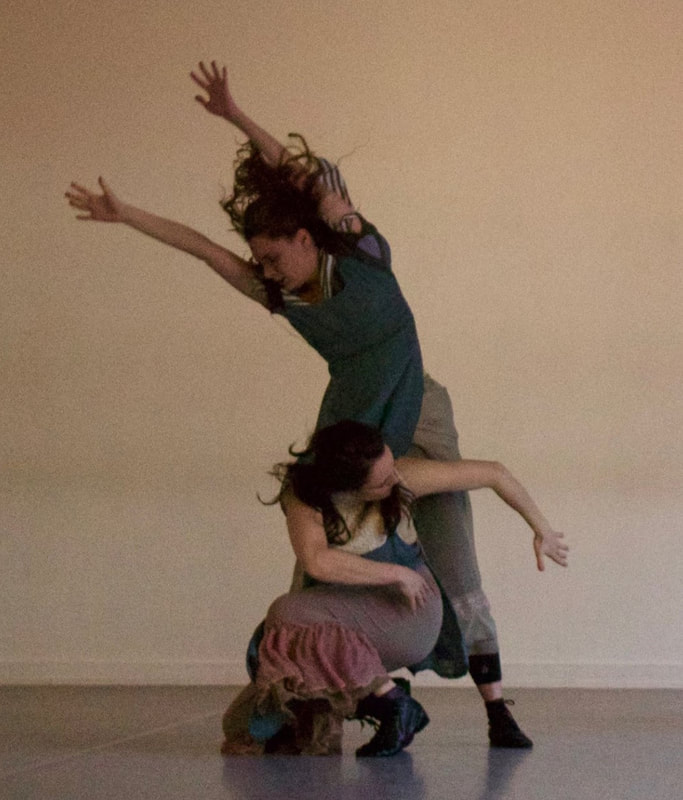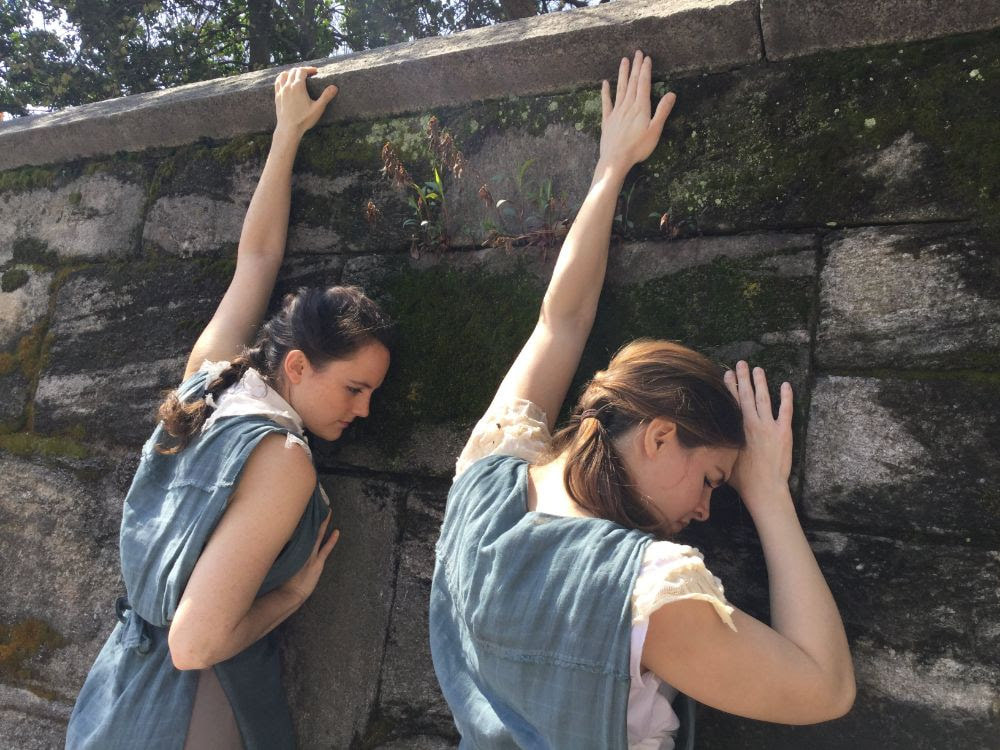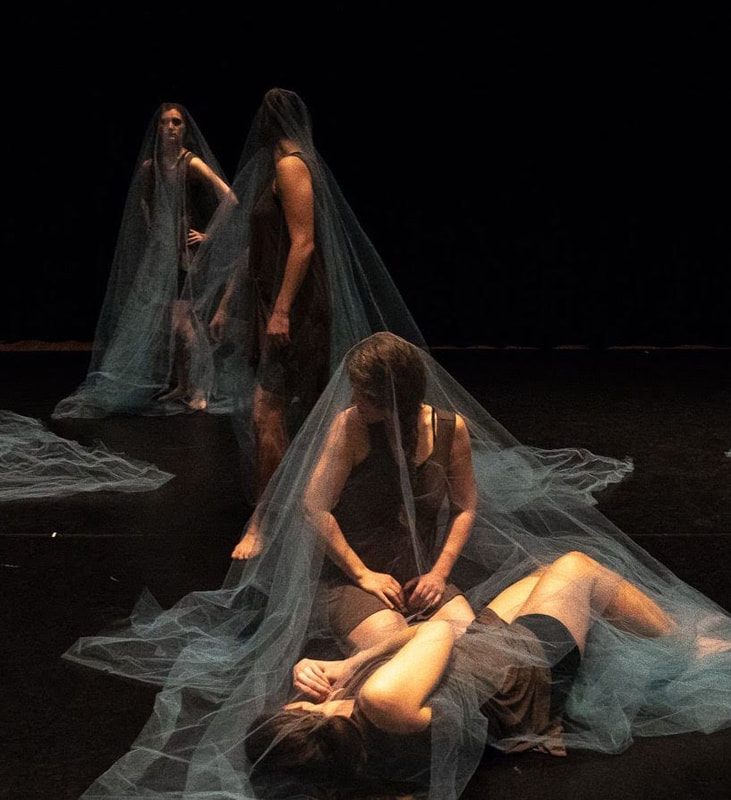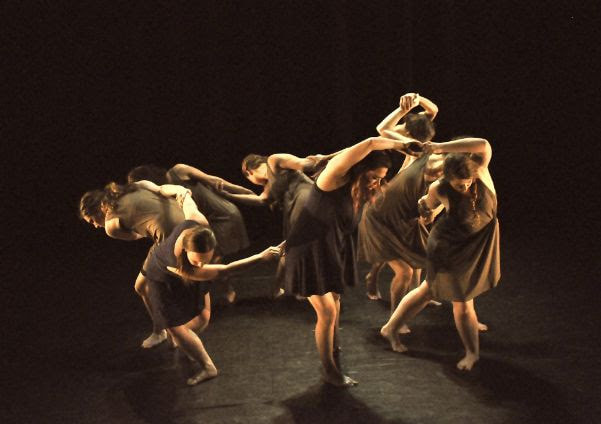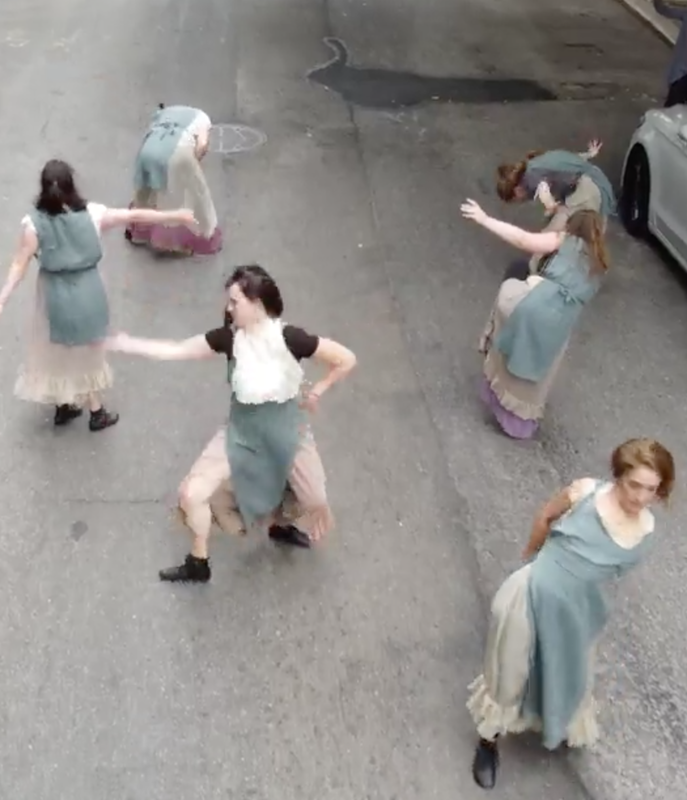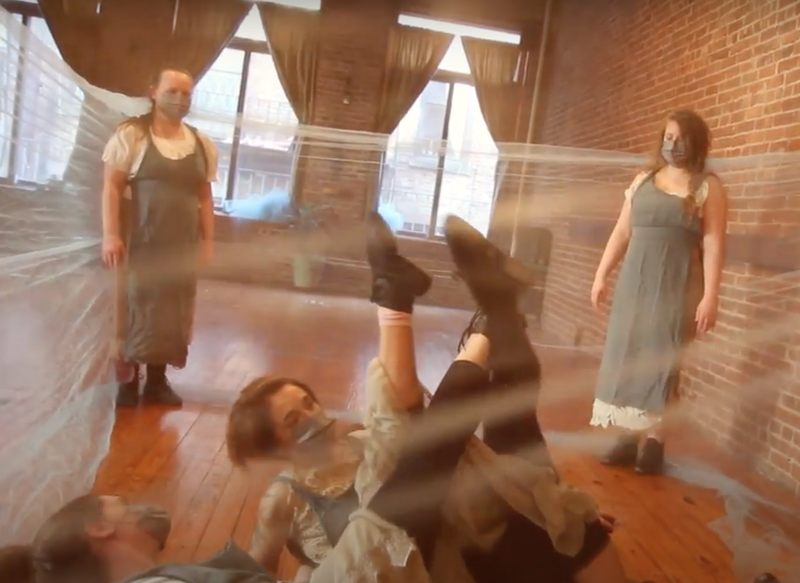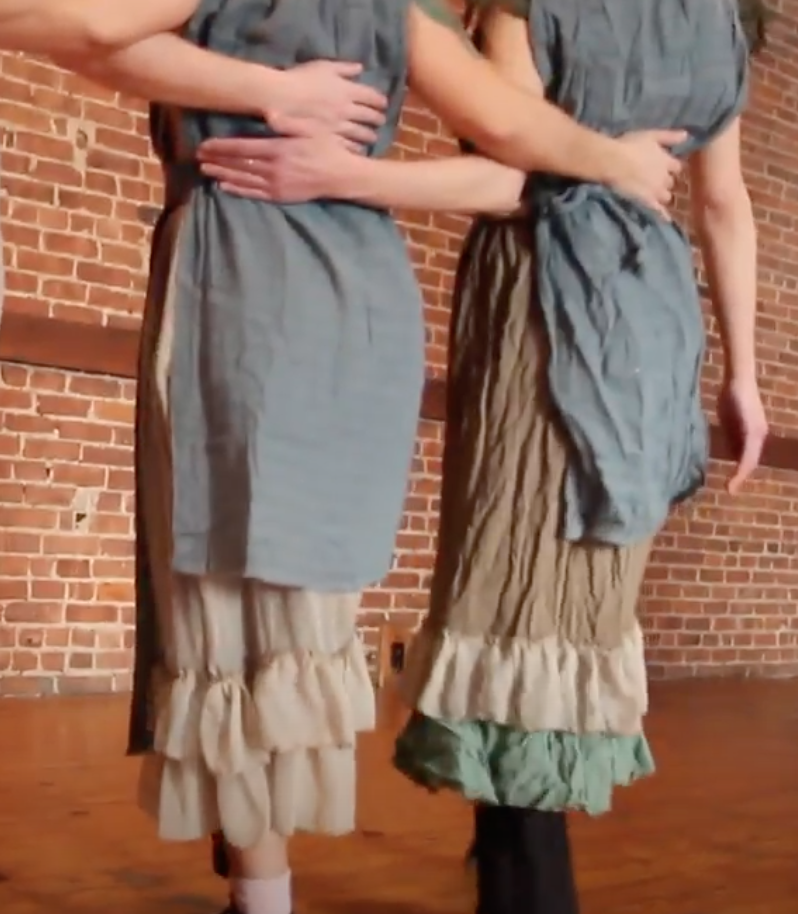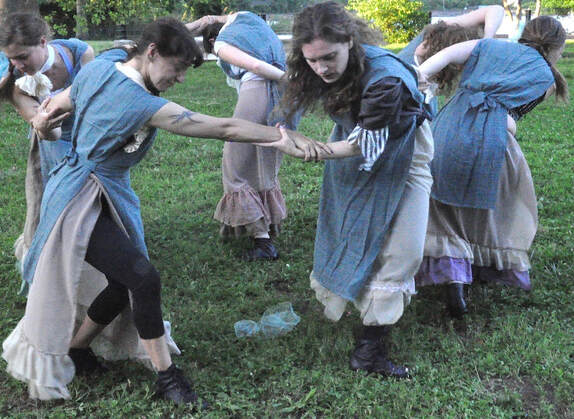 Inwood Hill Park (Escape from the House of Mercy, first performance, June 2019)
photo: Melanie Futorian
costumes: Ivana Drazic
Inwood Hill Park (Escape from the House of Mercy, first performance, June 2019)
photo: Melanie Futorian
costumes: Ivana Drazic
Escape from the House of Mercy is a work which is influenced by historical information about workhouses, poorhouses, laundries and other supposedly benevolent institutions, primarily for women and girls, in the US and in Ireland.
Escape from the House of Mercy is a 21st-century women's view of our social support systems measuring both the ground gained and the distance yet to be traveled. Leading this embodiment of buried stories are the eight dancers of Catherine Gallant/DANCE.
Escape from the House of Mercy is a dance/theater work that includes voice through spoken and sung text, video, props and a widely various sound score. Built in episodic sections, the presentation can be performed indoors or out and can be designed to vary in length from 20 minutes to a full hour. Events may include pre and post performance movement workshops, interviews, discussions, residencies and forums which focus on the the foundational theme of human rights and the role of the arts in transformative thinking and empathic response.
Core members of the group are experienced educators who have led communities of all ages to explore challenging concepts through movement.
The House of Mercy was one of a number of institutions at Inwood Hill Park, NYC. These included the Magdalen Asylum for unwed mothers (part of the Magdeline Laundry system run by the Catholic Church in both Ireland and the US) and the House of Rest for tuberculosis patients. The House of Mercy was a home for “abandoned and troubled women”, in fact, it was closer to a workhouse or prison to which most inhabitants were brought against their wills. Here a young woman could be locked up for years for an offense such as dancing in public or walking alone at night. Inhabitants were routinely punished with starvation diets, head shaving, and restraints. In 1895 three girls managed to escape the institution on whose walls were inscribed “I wish I was dead” and “God help me get out”. This inhumane and demoralizing treatment, in the guise of rehabilitation, was part of an era when the rights of the poor, especially women, were completely denied. Choreographer, Catherine Gallant invites the audience to wonder why this invisible place from the past is important now and how history connects us to the present discussion regarding the rights and privileges of women and disenfranchised people in the world.
We seek to ignite a curiosity which engages the public through dance experience, discussion and embodied learning, expanding the definition of dance and challenging expectations about where and how dance can be present in our lives. In addition to performing in traditional venues we continue to bring our performance projects out of the theater and into public space, nationally and internationally. We want to develop the idea of access and equity as we continue to share the history and future of dance as human expression and connection. With this work our goal is to reflect on the injustices of the past but also to focus on the development of community engagement and support which celebrate the drive for social freedoms and equity.
This project was originally presented in June 2019 as a 30 minute site-specific event accompanied by live music with support from the Partnerships for Parks (Inwood Parks Grant), made possible by Columbia University. Partnerships for Parks is a joint program of City Parks Foundation and NYC Parks. After our indoor performances were cancelled in April 2020 we continued to work. During 2020-2021 we turned our project into an 11-minute dance film, presented a masked indoor performance for 15 audience members, performed a short live-stream Zoom performance through Westfest (at the 100 year old Westbeth Gate) and presented a showing of the work outdoors near the Museum of the City of New York as part of Open Culture NYC.
In research before writing the initial grant proposal I learned about buildings that existed in Inwood Hill Park, NYC around the end of the 19th and into the early 20th century. I imagined a choreographic response to an aspect of the park's history. Workhouses, asylums and hospitals, mainly for women, were perched high on hills overlooking the Hudson River. There were beautiful vistas but without hope for most who gazed out from the bar covered windows. We were awarded the grant and began working on Escape from the House of Mercy in the Fall of 2017.
Catherine Gallant/Dance first presented Escape from the House of Mercy on Thursday, June 27 and Friday, June 28, 2019 in Inwood Hill Park in Upper Manhattan. The 30 minute outdoor performance featured seven dancers and a live band playing New Orleans funeral music directed by Kevin Blancq. In addition, a walking tour was led by local Inwood, NYC historian, Cole Thompson. The tour focused on the history of the park as participants traveled up the path towards the original location of the House of Mercy, which was demolished in 1933.
Videos and photos below:
Catherine Gallant, (choreographer) has been creating work in NYC over the past 30 years. Catherine Gallant/DANCE brings dance to new audiences through direct interaction with the public. Ms. Gallant's work has been performed in Times Square, a pedestrian block of E. 91st Street in Manhattan, Green-Wood Cemetery, and Inwood Hill Park. She has also presented work at the 92Y Harkness Dance Center, City Center Studios, WestFest, Danspace St. Mark’s (Dance Access), American Dance Guild and Jacob's Pillow's Inside/Out Series. Ms. Gallant’s work has been supported by Jody and John Arnhold, LMCC, Chashama, The Harkness Foundation for Dance, Foundation for Contemporary Arts and Partnerships for Parks/City Parks Foundation. Catherine is also the director of Dances by Isadora which, since 1989, performs, teaches and collaborates with dancers throughout the world. Catherine is the US performer of Jerome Bel’s recent work, Isadora Duncan. She began her study of the technique of Isadora Duncan in 1982 with Julia Levien and is a founding member of the Duncan Archive duncanarchive.org. Catherine has been the full-time NYCDOE dance educator at PS 89 in Manhattan since 1998. She and her students were featured in the Emmy-nominated PBS documentary, PS DANCE! Catherine is on the faculty of the Dance Education Laboratory (DEL). Ms. Gallant is a graduate of the Boston Conservatory and holds an MFA in Dance from Temple University. www.dancesbyisadora.com www.catherinegallantdance.com
© COPYRIGHT 2023 ALL RIGHTS RESERVED.
© COPYRIGHT 2023 ALL RIGHTS RESERVED.
